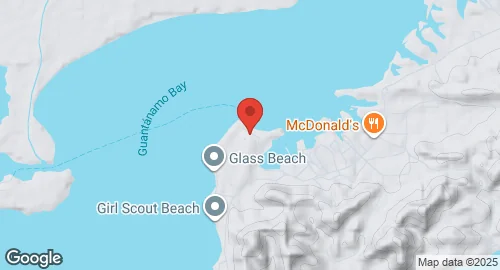Guantanamo Bay Naval Base
Summary
| Operating Country | 🇺🇸 United States |
| Location | 🇨🇺 Cuba |
| Status | ◉ Active |
| Usage | Military only |
| Year built | 1903 |
| Operating Organization | US Air Force |
| Units |
|
Description
Naval Station Guantanamo Bay, also known as NSGB or GTMO, is a United States military base located on 45 square miles of land and water at the southeastern end of Guantánamo Bay in Cuba. The U.S. has leased the area from Cuba since 1903, initially as a coaling station and naval base, with no fixed expiry date. The lease payment, set at $2,000 per year in gold until 1934, was adjusted to $4,085 per year in U.S. dollars in 1974. The Cuban government has consistently protested the U.S. presence since 1959, considering the base illegal under international law and refusing most lease payments.
The base became operational in 1903 and remains active. It is divided into Leeward Point, which hosts the active airfield, Leeward Point Field (IATA: NBW, ICAO: MUGM), and Windward Point, where most other activities are located. Leeward Point Field was constructed in 1943 with a 6,000-foot runway, extended to 8,000 feet in 1953. The base's elevation is 17 meters (56 feet) above mean sea level. A former airfield, McCalla Field, established in 1931, was deactivated in the 1970s and later used for refugee housing and now Camp Justice.
The main operators are the United States Navy and the United States Marine Corps. As of 2011, over 8,500 U.S. sailors and Marines were stationed there. Key units and commands include Headquarters Naval Station Guantanamo Bay, Joint Task Force Guantanamo, U.S. Coast Guard Maritime Security Detachment Guantanamo Bay, Marine Corps Security Force Company, and Naval Hospital Guantanamo Bay. Civilian contractors, many from Jamaica and the Philippines, also comprise a significant portion of the base's population.
Since 2002, a portion of the naval base has housed the Guantanamo Bay detention camp, for individuals captured during the War on Terror. The facility has been a subject of legal and human rights debates. The base also features wind turbines, installed in 2005, to reduce reliance on diesel fuel for electricity generation. The base maintains facilities such as schools, a hospital, and various services for its personnel.
